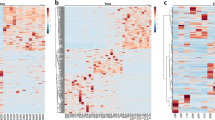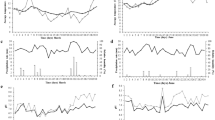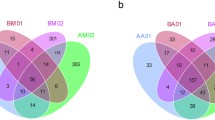Abstract
Most forensic research that is used to better understand how to estimate the postmortem interval (PMI) entails the study of the physiochemical characteristics of decomposition and the effects that environmental factors have on the decomposition process. Forensic entomology exploits the life cycles of arthropods like Diptera (blow flies or flesh flies) and Coleoptera (beetles) deposited on the decaying carcass to determine PMI. Forensic taphonomy, from the Greek word taphos meaning burial, studies the creation of the fossils of decomposed cadavers to ascertain information as to the nature and time of death. Compared to other areas of taphonomy, there have been relatively few forensic science studies that have investigated the impact of human decomposition on the microbial changes occurring on or in a corpse or in the soil communities underneath a body. Such research may facilitate the critical determination of PMI. Therefore, the scope of this review is to provide a concise summary of the current progress in the newly emerging field of microbial diversity and the next-generation metagenomic sequencing approaches for assessing these communities in humans and in the soil beneath decomposing human.


Similar content being viewed by others
References
Pechal J et al (2013) Microbial community functional change during vertebrate carrion decomposition. PLoS One 8:e79035
Hyde E et al (2013) The living dead: bacterial community structure of a cadaver at the onset and end of bloat stage of decomposition. PLoS ONE 8:e77733
Metcalf J et al (2013) A microbial clock provides an accurate estimate of the postmortem interval in a mouse model system. eLife 2:e01104
Pechal J et al (2013) The potential use of bacterial community succession in forensics as described by high throughput metagenomic sequencing. Int J Legal Med 128:193–205
Carter D, Yellowlees D, Tibbett M (2008) Temperature affects microbial decomposition of cadavers (Rattus rattus) in contrasting soils. Appl Soil Ecol 40:129–137
Benninger L, Carter D, Forbes S (2008) The biochemical alterations of soil beneath a decomposing carcass. Forensic Sci Int 180:70–75
Carter D, Yellowlees D, Tibbett M (2007) Cadaver decomposition in terrestrial ecosystems. Naturwissenschaften 94:12–24
Forbes S, Stuart B, Dadour I, Dent B (2004) A preliminary investigation of the stages of adipocere formation. J Forensic Sci 49:1–9
The Human Microbiome Consortium (2012) Structure, function and diversity of human microbiome in an adult reference population. Nature 486:207–214
Gilbert JA et al (2010) Meeting report. The terabase metagenomics workshop and the vision of an earth microbiome project. Stand Genomic Sci 3:249–253
Payne J (1965) A summer carrion study of the baby pig Sus scrofa Linnaeus. Ecology 46:592–602
Tomberlin J et al (2011) A roadmap for bridging basic and applied research in forensic entomology. Annu Rev Entomol 56:401–421
Matuszewski S, Bajerlein D, Konwerski S, Szpila K (2010) Insect succession and carrion decomposition in selected forests of Central Europe. Part 1: pattern and rate of decomposition. Forensic Sci Int 194:85–93
Centeno N, Maldonado M, Oliva A (2002) Seasonal patterns of arthropods occuring on sheltered and unsheltered pig carcasses in Buenos Aires Province (Argentina). Forensic Sci Int 126:63–70
Hewadikaram K, Goff M (1991) Effect of carcass size on rate of decomposition and arthropod succession patterns. Am J Forensic Med Pathol 12:235–240
Scholenly K, Reid W (1987) Dynamics of heterotrophic succession in carrion arthropod assemblages: discrete series of a continuum of change? Oceologia (Berlin) 73:192–202
Houck M, Siegel J (2006) Soil and glass. In: Fundamentals of forensic science. Elsevier, Amsterdam, pp 409–430
Baldrian P et al (2012) Active and total microbial communities in forest soil are largely differenct and highly stratified during decomposition. ISME J 6:248–258
Roesch L et al (2007) Pyrosequencing enumerates and contrasts soil microbial diversity. ISME J 1:283–290
Vaninsberghe D, Hartmann M, Stewart G, Mohn W (2013) Isolation of a substantial proportion of forest soil bacterial communities detected via pyrotag sequencing. Appl Environ Microbiol 79:2096–2098
Peterson J et al (2009) The NIH human microbiome project. Genome Res 19:2317–2323
Seo S et al (2013) Improvement of short tandem repeat analysis of samples highly contaminated by humic acid. J Forensic Legal Med 20:922–928
Antony-Babu A et al (2013) An improved method compatible with metagenomic analyses to extract genomic DNA form soil in Tuber melanosporum orchards. J Appl Microbiol 115:163–170
Knauth S, Schmidt H, Tippkotter R (2012) Comparison of commercial kits for the extraction of DNA from paddy soils. Lett Appl Microbiol 56:222–228
Sagova-Mareckova M et al (2008) Innovative methods for soil DNA purification tested in soils with widely differing characteristics. Appl Environ Microbiol 74:2902–2907
Griffiths R, Whiteley A, O’Donnell A, Bailey M (2000) Rapid method of coextraction of DNA and RNA from natural environments for analysis of ribosomal DNA- and rRNA-based microbial community composition. Appl Environ Microbiol 66:5488–5491
Moreira D (1998) Efficient removal of PCR inhibitors using agarose-embedded DNA preparations. Nucleic Acid Res 26:3309–3310
Monroe C, Grier C, Kemp B (2013) Evaluating the efficacy of various thermo-stable polymerases against co-extracted PCR inhibitors in ancient DNA samples. Forensic Sci Int 228:142–153
Kermekchiev M, Kirilova L, Vail E, Barnes W (2009) Mutants of Taq DNA polymerases resistant to PCR inhibitors allow DNA amplification from whole blood and crude soil samples. Nucleic Acids Res 37:e40
Paulin M et al (2013) Improving Griffith’s protocol for co-extraction of microbial DNA and RNA in adsorptive soils. Soil Biol Biochem 63:37–49
Janda J, Abbott S (2007) 16S rRNA gene secquencing for bacterial identification in the diagnostic laboratory: pluses, perils, and pitfalls. J Clin Microbiol 45:2761–2764
Wooley J, Godzik A, Friedberg I (2010) A primer on metagenomics. PLoS Comput Biol 6:e1000667
Lane D et al (1985) Rapid determination o f16S ribosomal RNA sequences for phylogenetic analyses. PNAS 82:6955–6959
Schloss P, Gevers S, Westcott S (2011) Reducing the effects of PCR amplicfication and sequencing artifacts on 16S rRNA-based studies. PLoS ONE 6:e27310
Haas B et al (2011) Chimeric 16S rRNA sequence formation and detection in Sanger and 454-pyrosequenced PCR amplicons. Genome Res 21:494–504
Chakravorty S et al (2007) A detailed analysis of 16S ribosomal RNA gene segments for the diagnosis of pathogenic bacteria. J Microbiol Methods 69:330–339
El-Metwally S, Hamza T, Zakaria M, Helmy M (2013) Next-generation sequence assembly: four stages for data processing and computational challenges. PLoS Comput Biol 9:e1003345
Margulies M et al (2005) Genome sequencing in microfabricated high-density picoliter reactors. Nature 437:376–380
Kosugi S et al (2013) Coval: improving alignment quality and variant calling accuracy for next-generation sequencing data. PLoS ONE 8:e75402
Drancourt M et al (2000) 16S ribosomal DNA sequence analysis of a large collection of environmental and clinical unidentifiable bacterial isolates. J Clin Microbiol 38:3623–3630
Cline J, Braman J, Hogrefe H (1996) PCR fidelity of Pfu DNA polymerase and other thermostable DNA polymerases. Nucleic Acids Res 24:3546–3551
Kunkel T (1992) DNA replication fidelity. J Biol Chem 267:18251–18254
Teeling H, Glockner F (2012) Current opportunities and challenges in microbial metagenome analysis—a bioinformatic perspective. Brief Bioinform 13:728–742
Turnbaugh P et al (2007) The human microbiome project. Nature 449:804–810
Qin J et al (2010) A human gut microbial gene catalogue established by metagenomic sequencing. Nature 464:59–65
Carter D, Yellowlees D, Tibbett M (2010) Moisture can be the dominant environmental parameter governing cadaver decomposition in soil. Forensic Sci Int 200:60–66
Delmont T et al (2011) Metagenomic comparison of direct and indirect soil DNA extraction approaches. J Microbiol Methods 86:397–400
Caporaso J et al (2012) Ultra-high-throughput microbial community analysis on the Illumina HiSeq and MiSeq platforms. ISME J 6:1621–1624
Vass A et al (1992) Time since death determinations of human cadavers using soil solution. J Forensic Sci 37:1236–1253
Vass A (2001) Beyond the grave—understanding human decomposition. Microbiol Today 28:190–192
Gunn A, Pitt S (2012) Microbes as forensic indicators. Trop Biomed 29:311–330
Fiedler S, Graw M (2003) Decomposition of buried corpses, with special reference to the formation of adipocere. Naturwissenschaften 90:291–300
Teo C, Pawita AKO, Atiah Ayunni A, Noor Hazfalinda H (2013) Post mortem changes in relation to different types of clothing. Malyasian J Pathol 35:77–85
Hawksworth D, Wiltshire P (2011) Forensic mycology: the use of fungi in criminal investigations. Forensic Sci Int 206:1–11
Tabaac B et al (2013) Bacteria detected on surfaces of formalin fixed anatomy cadavers. Ital J Anat Embryol 118:1–5
Ritchie N, Schutter M, Dick R, Myrold D (2000) Use of length heterogeneity PCR and fatty acid methyl ester profiles to characterize microbial communities in soil. Appl Environ Mircrobiol 66:1668–1675
Hill G et al (2000) Methods for assessing the composition and diversity of soil microbial communities. Appl Soil Ecol 15:25–36
Buyer J, Sasser M (2012) High throughput phospholipid fatty acid analysis of soils. Appl Soil Ecol 61:127–130
Moreno L et al (2011) The application of amplicon length heterogeneity PCR (LH-PCR) for monitoring the dynamics of soil microbial communities associated with cadaver decomposition. J Microbiol Methods 84:388–393
Heath L, Saunders B (2006) Assessing the potential of bacterial DNA profiling for forensic soil comparisons. J Forensic Sci 51:1062–1068
Moreno L et al (2006) Microbial metagenome profiling using amplicon length heterogeneity-polymerase chain reaction proves more effective than elemental analysis in discriminating soil specimens. J Forensic Sci 51:1315–1322
Osborne C, Rees G, Bernstein Y, Janssen P (2006) New threshold and confidence estimates for terminal restriction fragment length polymorphism analysis of complex bacterial communities. Appl Environ Microbiol 72:1270–1278
Dunbar J, Ticknor L, Kuske C (2001) Phylogenetic specificity and reproducibility and new method for analysis of terminal restriction fragment profiles of 16S rRNA genes from bacterial communities. Appl Environ Microbiol 67:190–197
Martiny J et al (2006) Microbial biogeography; putting microorganisms on the map. Nat Rev Microbiol 4:102–112
Muyzer G, DeWaal E, Uitterlinden A (1993) Profiling of complex microbial populations by denaturing gradient gel electrophoresis analysis of polymerase chain reaction-amplified genes coding for 16S rRNA. Appl Environ Microbiol 59:695–700
Daniel R (2005) The metagenomics of soil. Nat Rev Microbiol 3:470–478
Tringe S, Rubin E (2005) Metagenomics: DNA sequencing of environmental samples. Nat Rev Genet 6:805–814
Quail M et al (2012) A tale of three next generation sequencing platforms: comparison of Ion Torrent, Pacific Biosciences and Illumina MiSeq sequencers. BMC Genomics 13:341
Mizrahi-Man O, Davenport E, Gilad Y (2013) Taxonomic classification of bacterial 16S rRNA genes using short sequencing reads: evaluation of effective study designs. PLoS ONE 8:e53608
Liu L et al (2012) Comparison of next-generation sequencing systems. J Biomed Biotechnol. doi:10.1155/2012/251364
Chandra J, Sabharwal K (1968) Determination of time since death from a study of various postmortem changes. J Indian Med Assoc 51:336–341
Campobasso C, DiVella G, Introna F (2001) Factors affecting decomposition and Diptera colonization. Forensic Sci Int 120:18–27
Woese C (2000) Interpreting the universal phylogenetic tree. PNAS 97:8392–8396
Conflict of interest
The authors declare that they have no conflict of interest.
Author information
Authors and Affiliations
Corresponding author
Rights and permissions
About this article
Cite this article
Finley, S.J., Benbow, M.E. & Javan, G.T. Microbial communities associated with human decomposition and their potential use as postmortem clocks. Int J Legal Med 129, 623–632 (2015). https://doi.org/10.1007/s00414-014-1059-0
Received:
Accepted:
Published:
Issue Date:
DOI: https://doi.org/10.1007/s00414-014-1059-0




